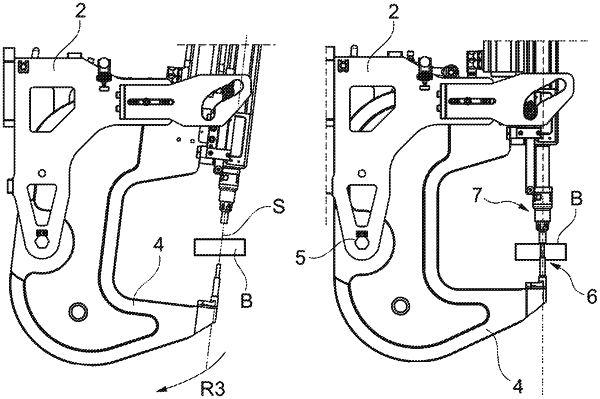| CPC B21J 15/30 (2013.01) [B21D 39/031 (2013.01)] | 11 Claims |

|
1. An apparatus for clinching a component or for setting a joining element or a functional element on a component, comprising:
a retention portion, with which the apparatus can be positioned on a receiving member in the environment, and
a base member which is supported via a bearing location on the retention portion, and
wherein a bottom die unit having a bottom die element is received on the base member and the apparatus further comprises a stamp unit which is opposite the bottom die unit and which has a stamp,
wherein there is provided in order to move the stamp and/or the bottom die element a drive unit which reversibly drives a linearly movable actuation element, wherein the linearly movable actuation element is directly coupled to the stamp unit or the bottom die unit, along a joining axis of the apparatus in order to act on the component which is present between the stamp unit and the bottom die unit,
wherein the base member is movable via the bearing location relative to the retention portion,
wherein a control device is constructed between the actuation element and the retention portion in such a manner that a position of the base member relative to the retention portion is predetermined in accordance with a position of the actuation element along the joining axis as a result of a driven movement of the actuation element,
wherein the bearing or an axial bearing location comprises a rotary bearing, and
wherein the joining axis of the apparatus coincides with a longitudinal center axis of the linearly movable actuation element.
|